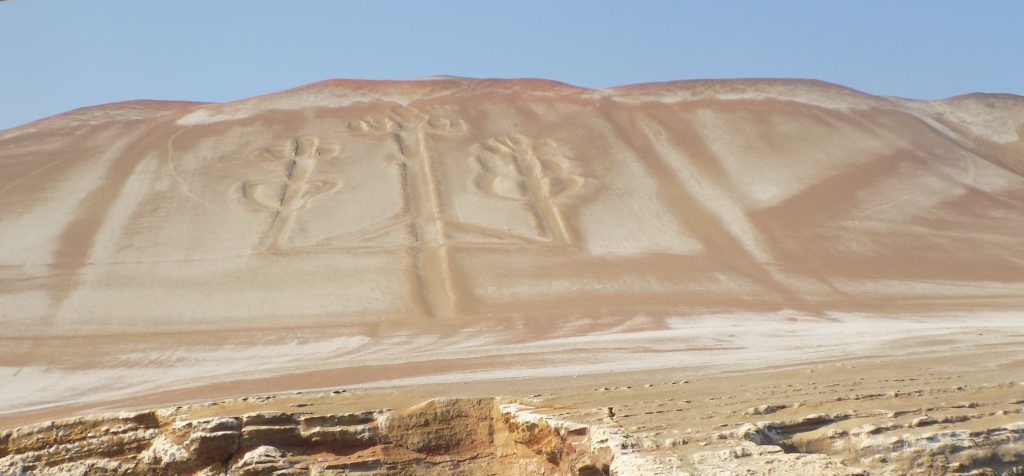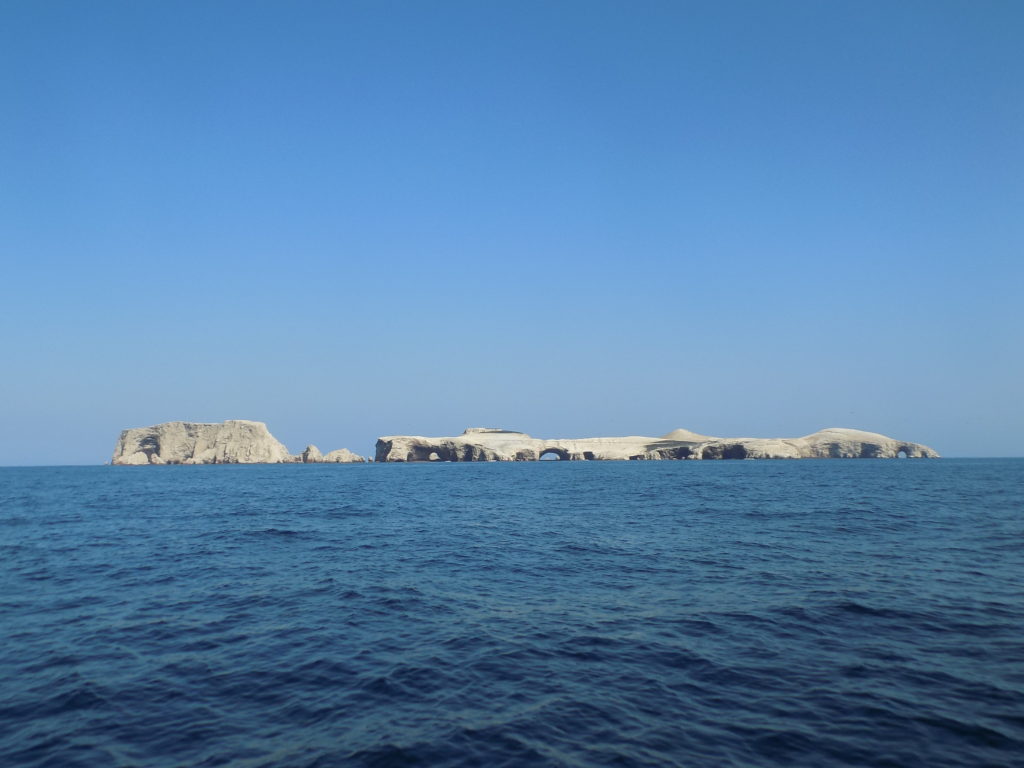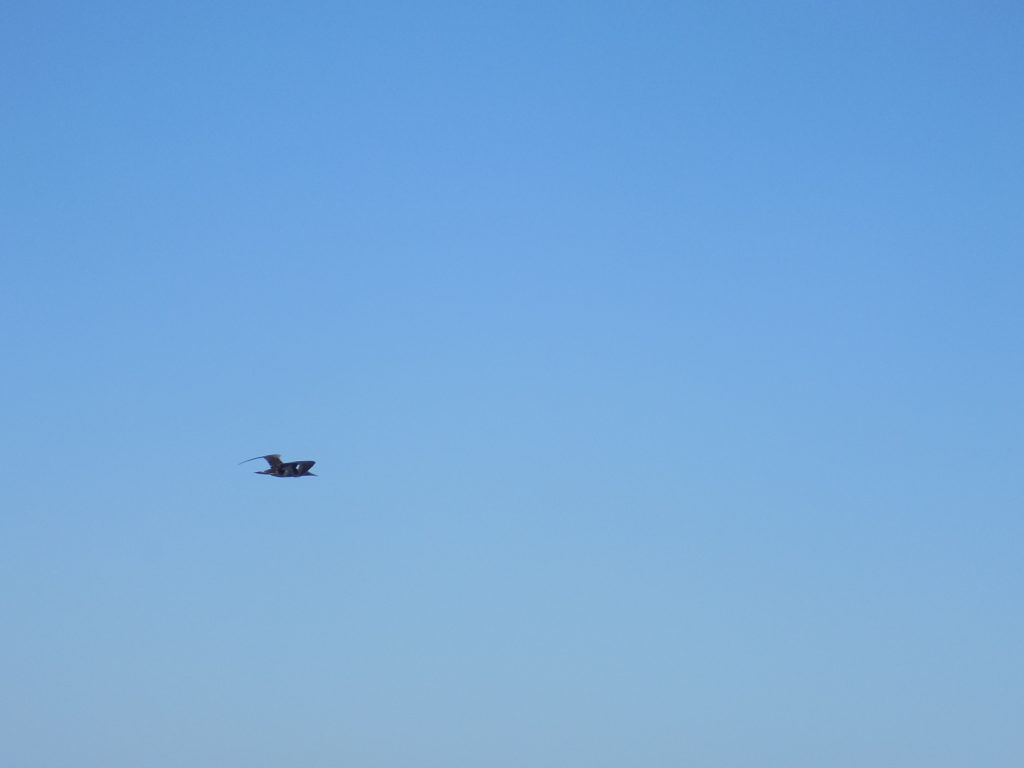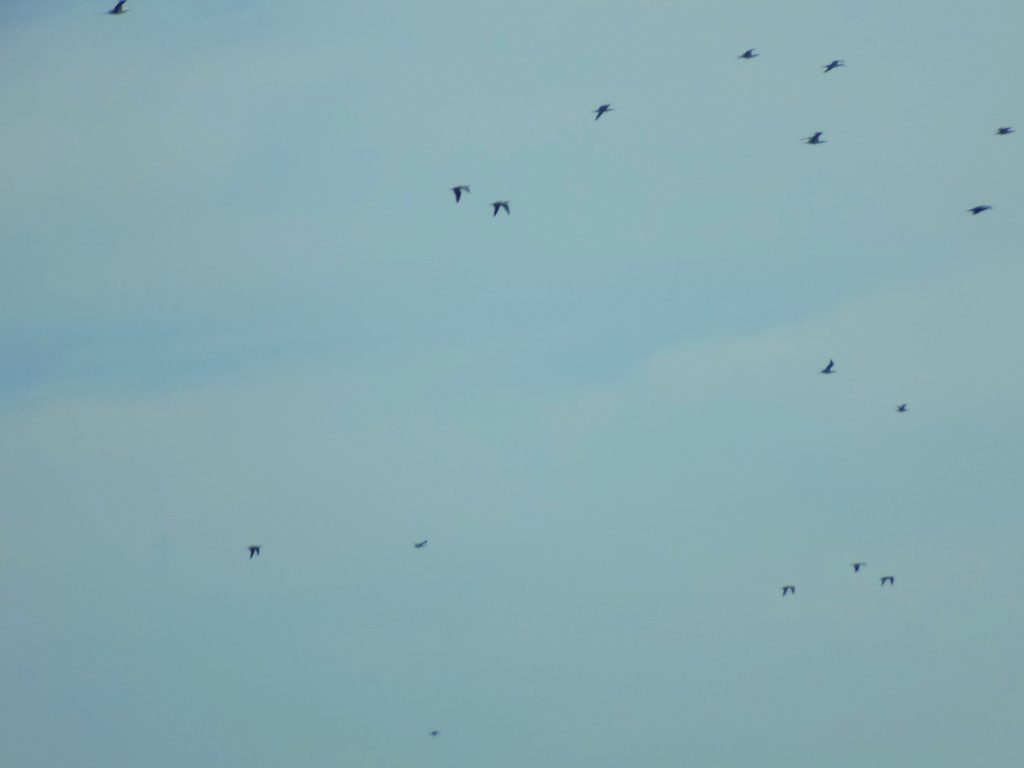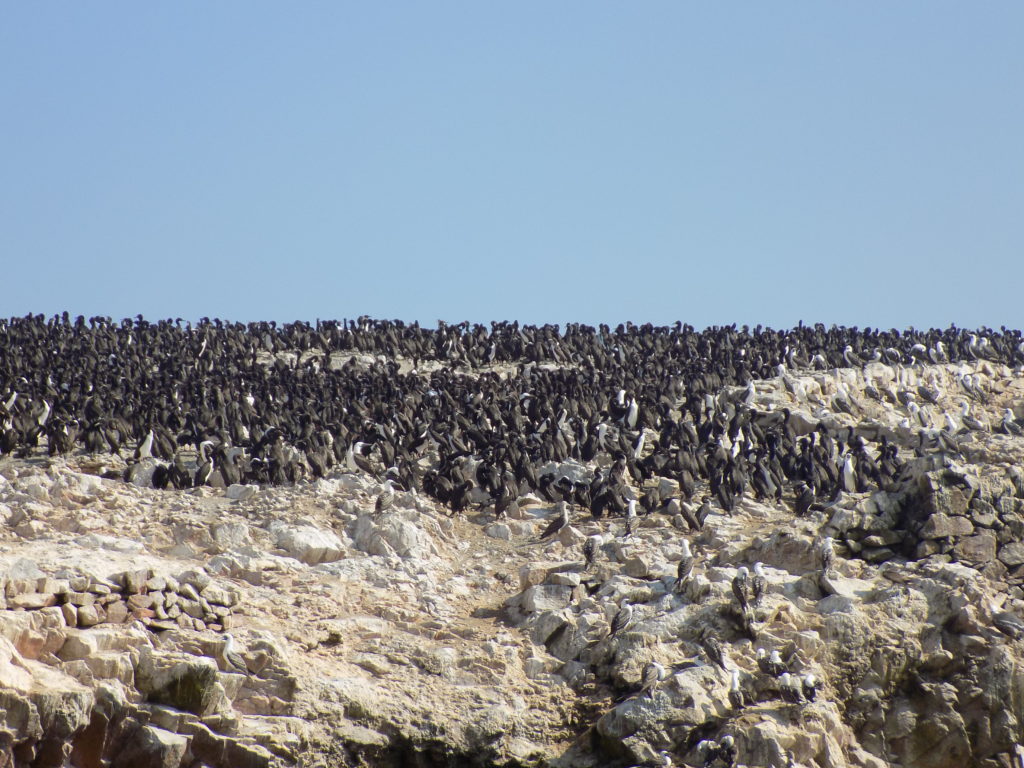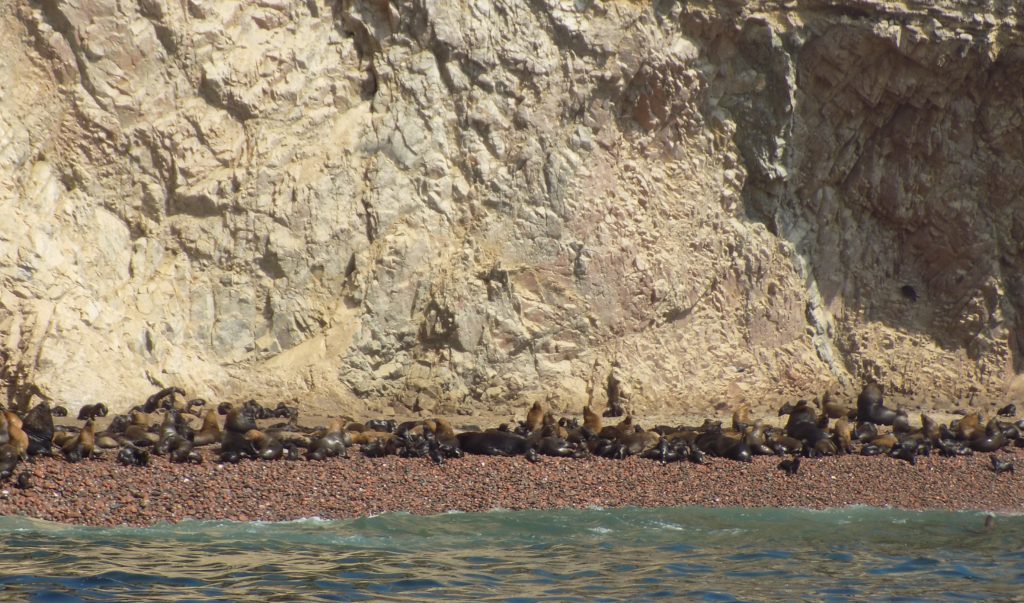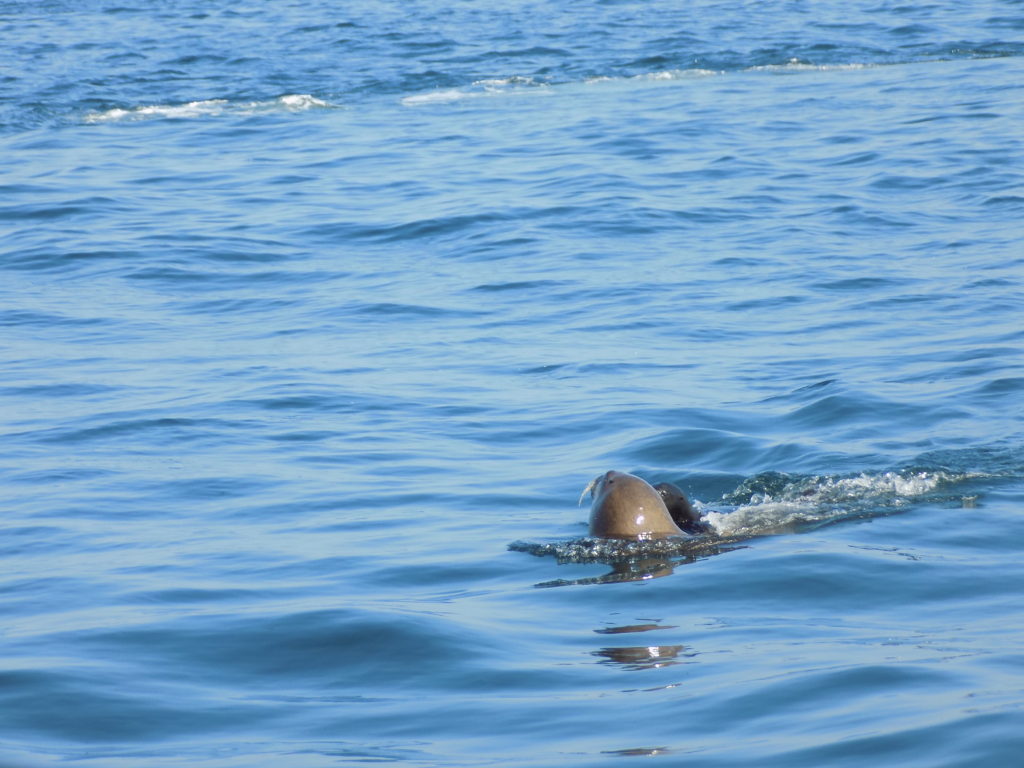The Candelabra that isn’t.
The Ballestas Islands are part of the Paracas National Reserve – a protected area of 335,000 hectares (217,750 marine and 117,250 terrestrial) created to conserve both the desert and marine ecosystems of the south-central coast of Perú. We left the hotel dock for a short 16-kilometer ride that looped around the northern end of the Paracas Peninsula before setting out to the islands.
As we made that loop, we had our attention drawn to something we might not have expected. Etched into the sand of the northern side of the peninsula is the mysterious geoglyph called the Candelabra.
Measuring nearly 200 meters from top to bottom, it’s said to be visible from as far as 18 kilometers but we sailed much closer than that. Its creation date isn’t known but radiocarbon analysis of artifacts found nearby date to 200 BCE. Still, as with so much else we’ve encountered in this journey, regarding its purpose and representation, we have to admit (say it with me), “We don’t know.”
While the term candelabra probably evokes a reasonable mental image of its shape and design, that would certainly have not been its intent. The main speculative schools posit differing representational hypotheses. Some say it’s a depiction of a cactus plant or even jimson weed. Others say it’s meant to evoke the trident of the Andean creator god Viracocha who disappeared across the Pacific Ocean, but who would return during times of trouble.
The Peruvian writer and commentator Beltrán García has put forth one of the more imaginative explanations calling it “a gigantic and precise seismograph, able to register telluric waves and seismic shocks coming not only from Peru, but from all over the planet.” The most prosaic explanation is that it was simply a signal for sailors searching for the Paracas coast that they were nearing their destination.
On to the Islands.
When I first saw the crusty, pale, and barren looking mounds rising ever so slightly above the sea, I have to admit I wasn’t particularly impressed with Perú’s “poor man’s Galapagos.”
As we approached, the lone bird
that had flown beside us for several minutes, disappeared into a squawking flock
that would build to a tumultuous cacophony of interspecies sonic mayhem. Somehow it still managed to enchant my ears. As we neared the islands a far less enchanting sensory experience focused my attention. This was the smell of guano. Meters and meters of guano. Tons and tons of guano. Dried guano. Fresh guano. An ever-present unrelenting odor of guano.
While the Chincha Islands a bit to the north are much larger than the Ballestas, when I saw a scene like this
it was hard to imagine that as little as 150 years ago I might have seen 13 times as many birds looking for a place to poop. A census in 2011 estimated 4,200,000 birds on these guano islands. In the middle of the 19th century, that count was estimated to be as high as 53 million.
In addition to the birds, whales, dolphins, and sea turtles pass through these waters and the islands themselves are a critical breeding area for the South American sea lion
as well as the marine otter and several other marine mammal species. One of the real joys of our trip was catching glimpses of a mother seal teaching her baby how to swim.
It might be hard to imagine that climate change can pose a threat to islands covered in bird feces but this is very much the case. Seabird populations decrease in El Niño years sometimes quite dramatically. Changes to the Humboldt Current bring less mineral rich water for the plankton. Less plankton depresses the anchovy and mackerel counts providing less food for the birds and larger fish and so on up the food chain. The increased likelihood of these weather events will correspondingly increase the survival pressure on both the seabird and sea mammal populations.
The islands are protected and tourists aren’t allowed on them. So, for better (can’t imagine walking on all that guano or inhaling its dust or disturbing the young seals and nesting birds) or worse (it would have been cool to see them up close and to see if there’s any plant growth), some of these pictures were taken from the closest approach the law allows.
Since it’s little more than a short boat ride out and back, the excursion I took to the Islas Ballestas was relatively brief – perhaps an hour and a half. Because my bus back to Lima was scheduled to depart late in the afternoon, I had some time, courtesy of my local guide, to visit some of the coastal and desert spots in the Paracas National Reserve where tourists are permitted.
I’ll recount that unexpected side trip and delve into a bit more of Lima’s history in the coming entries.
